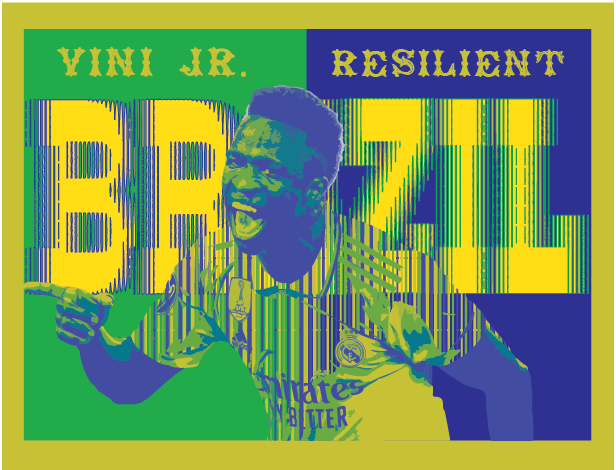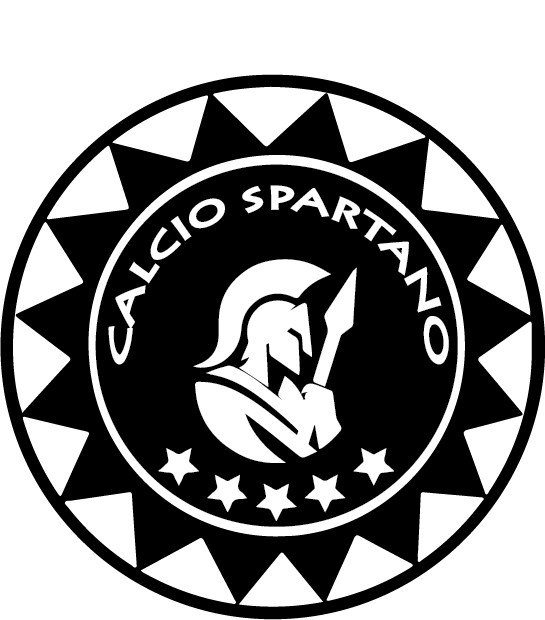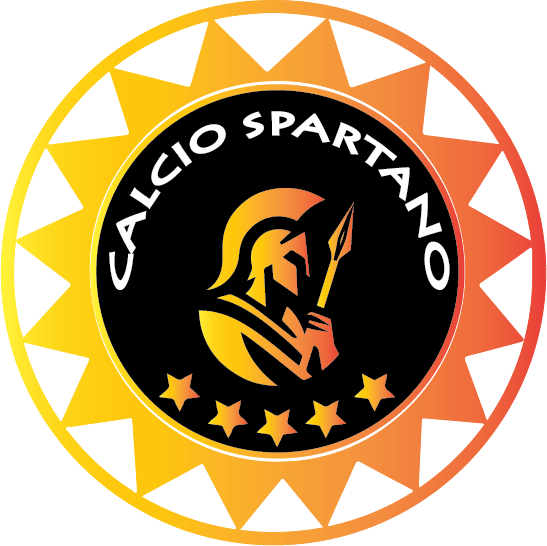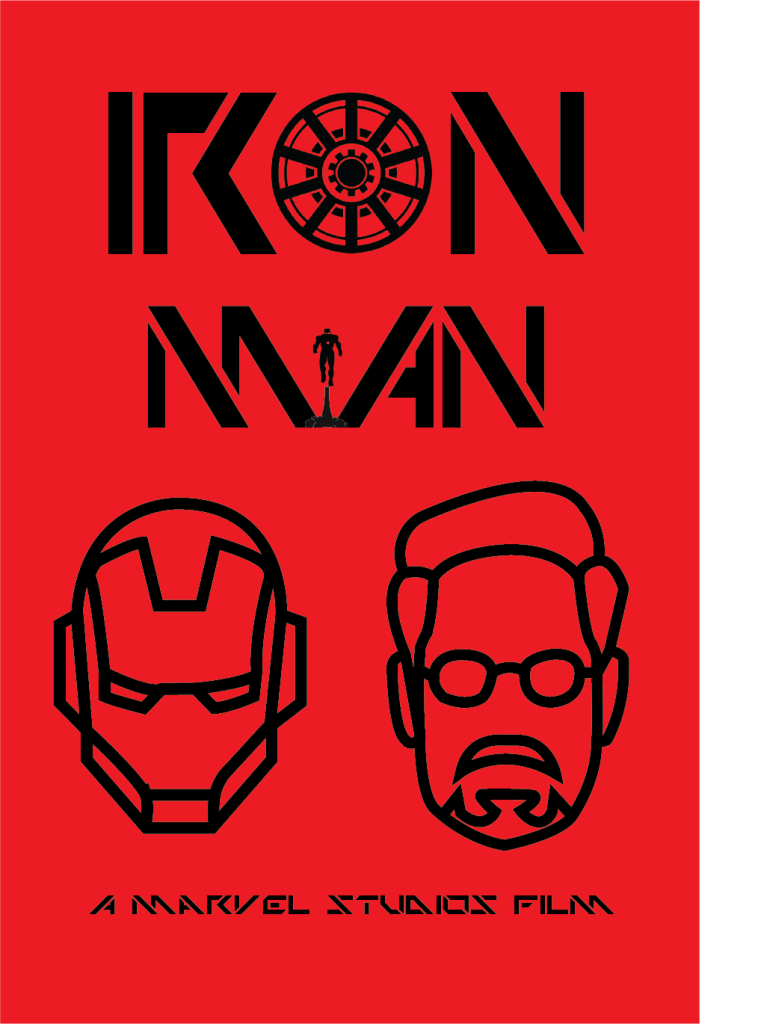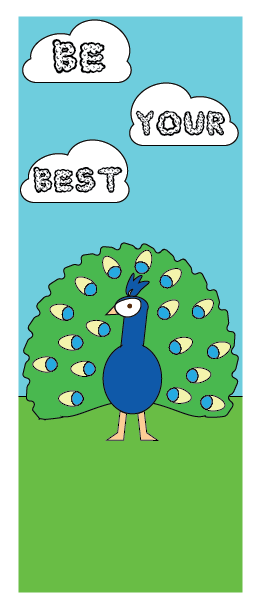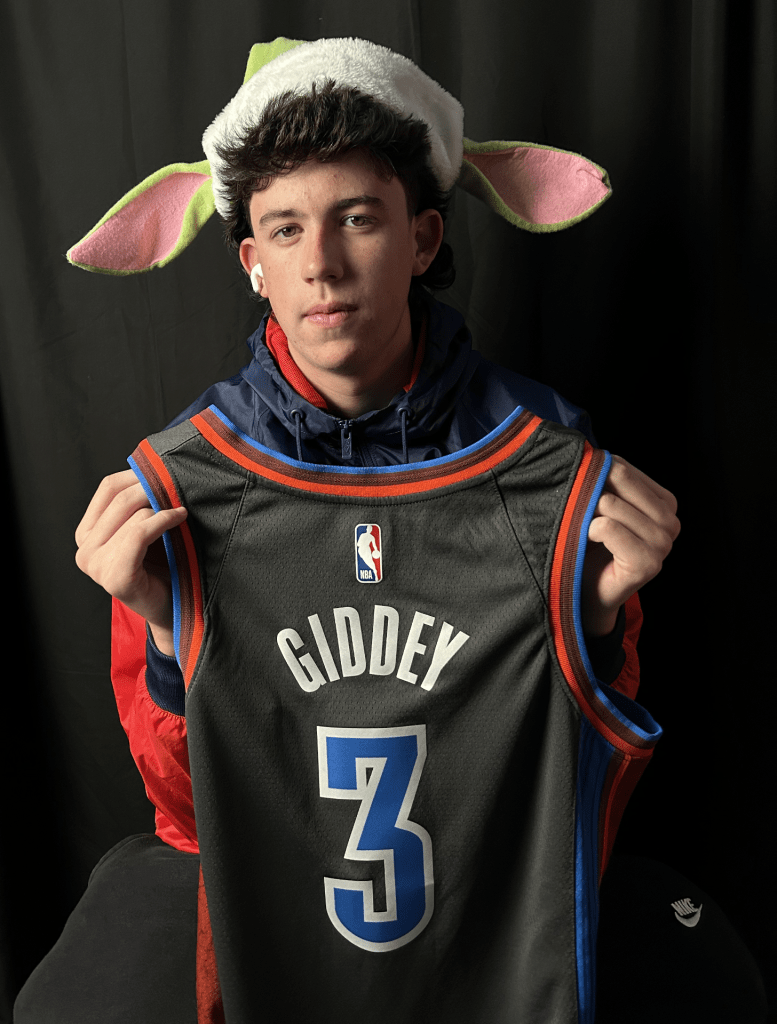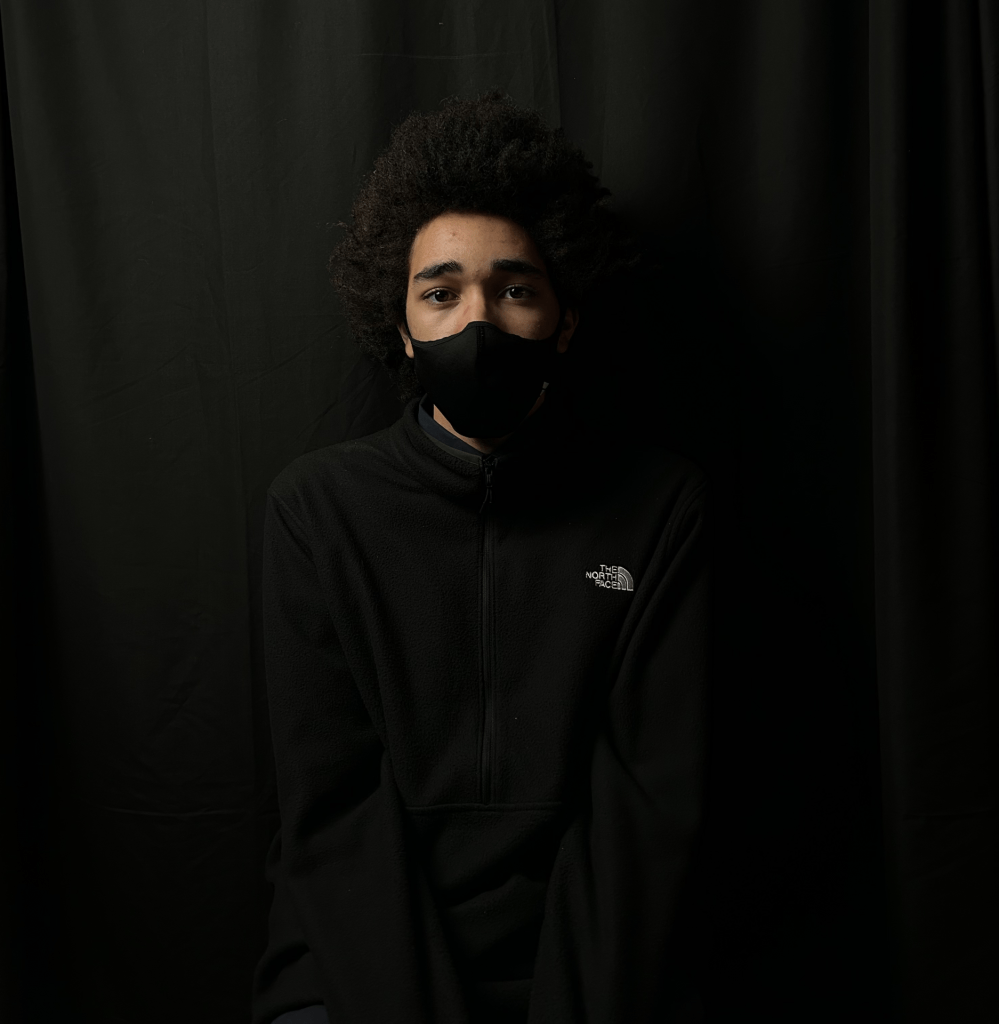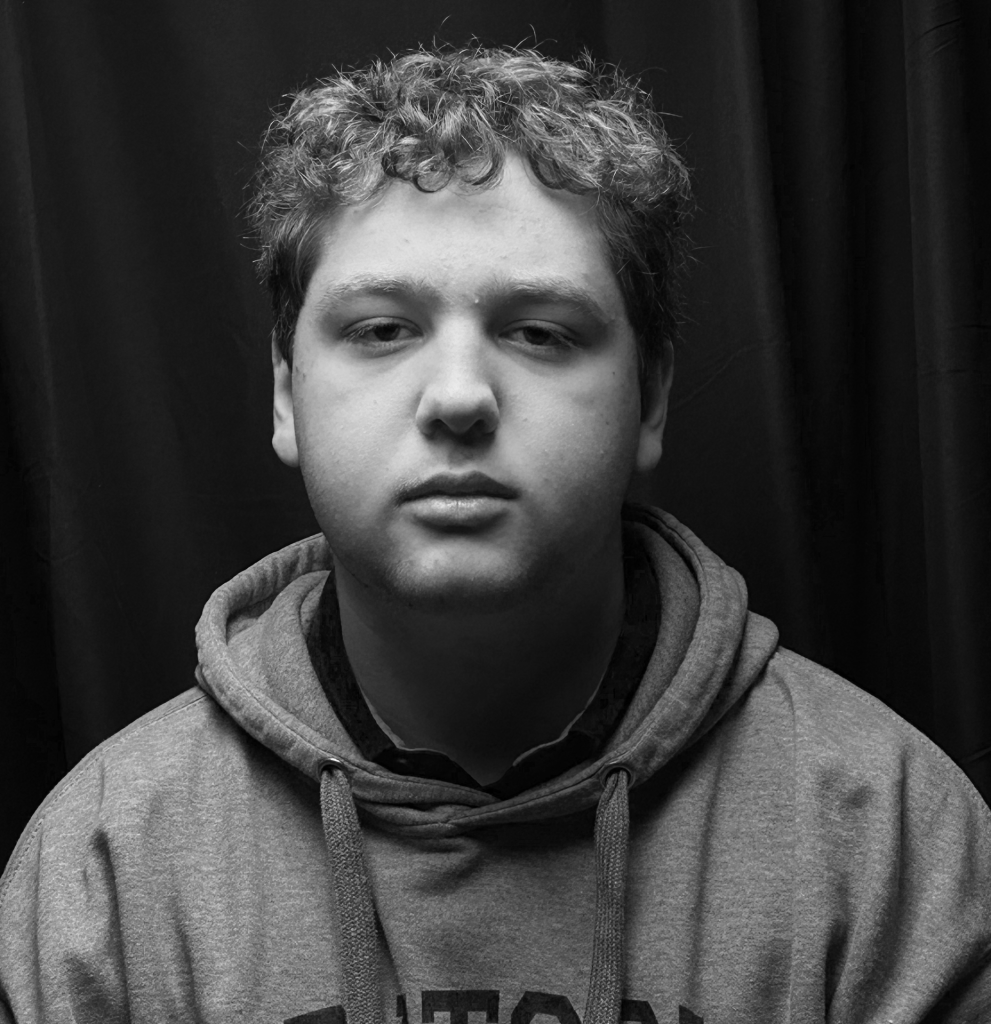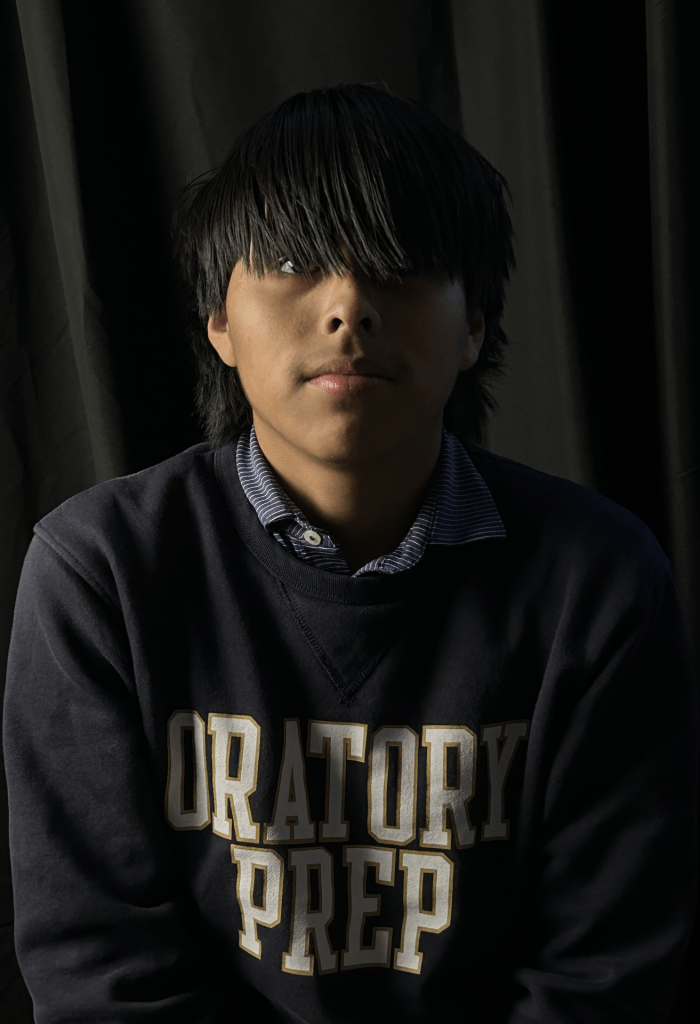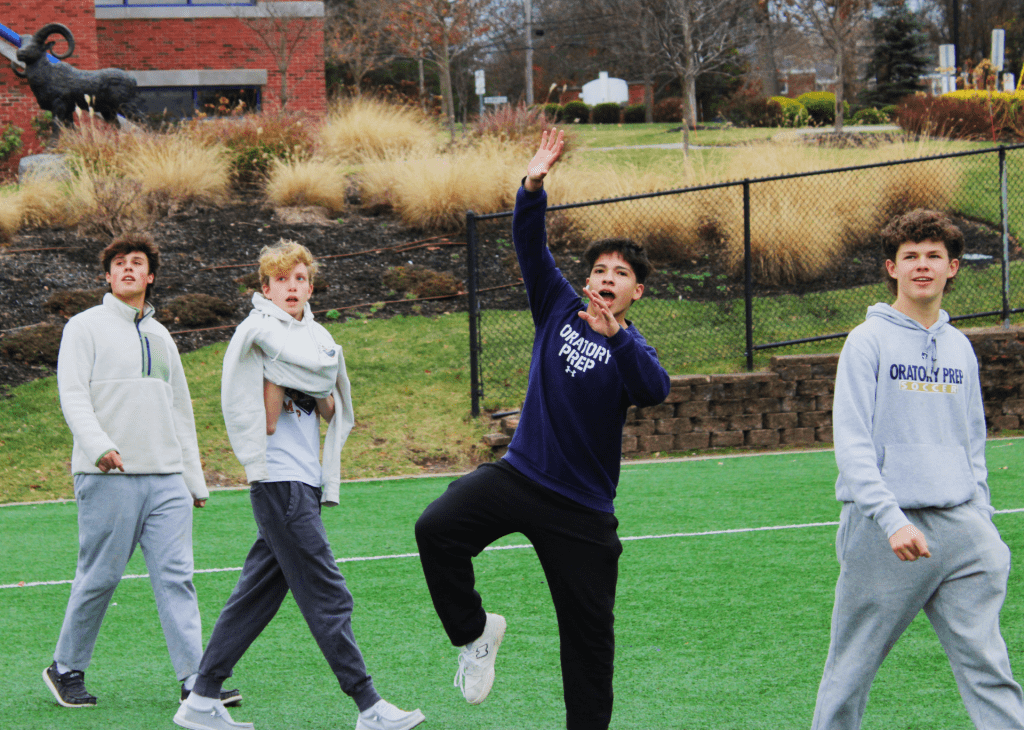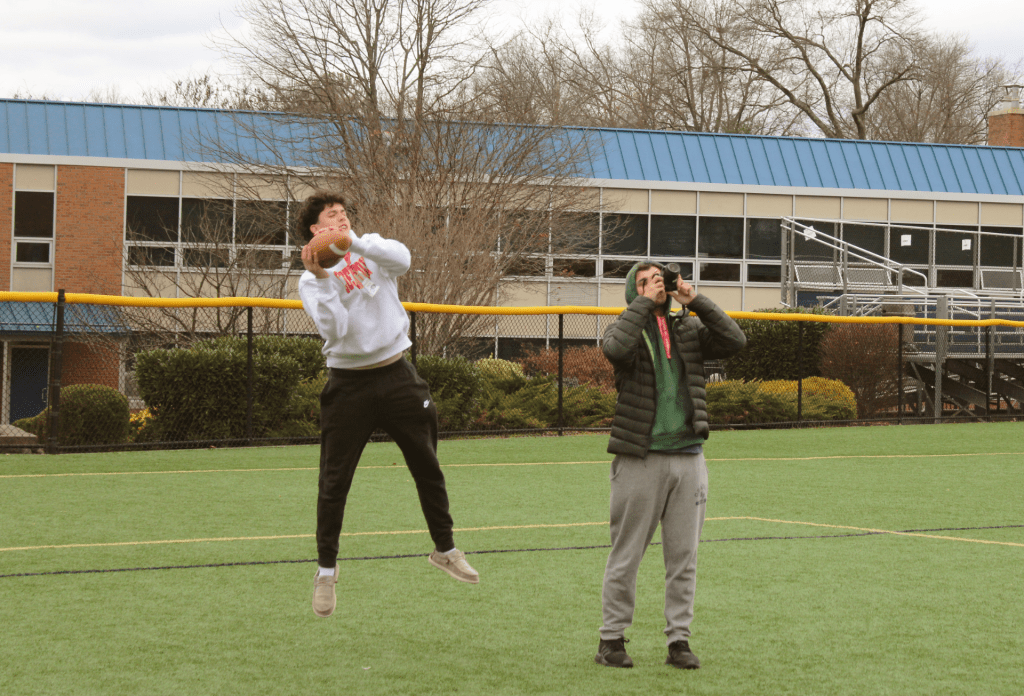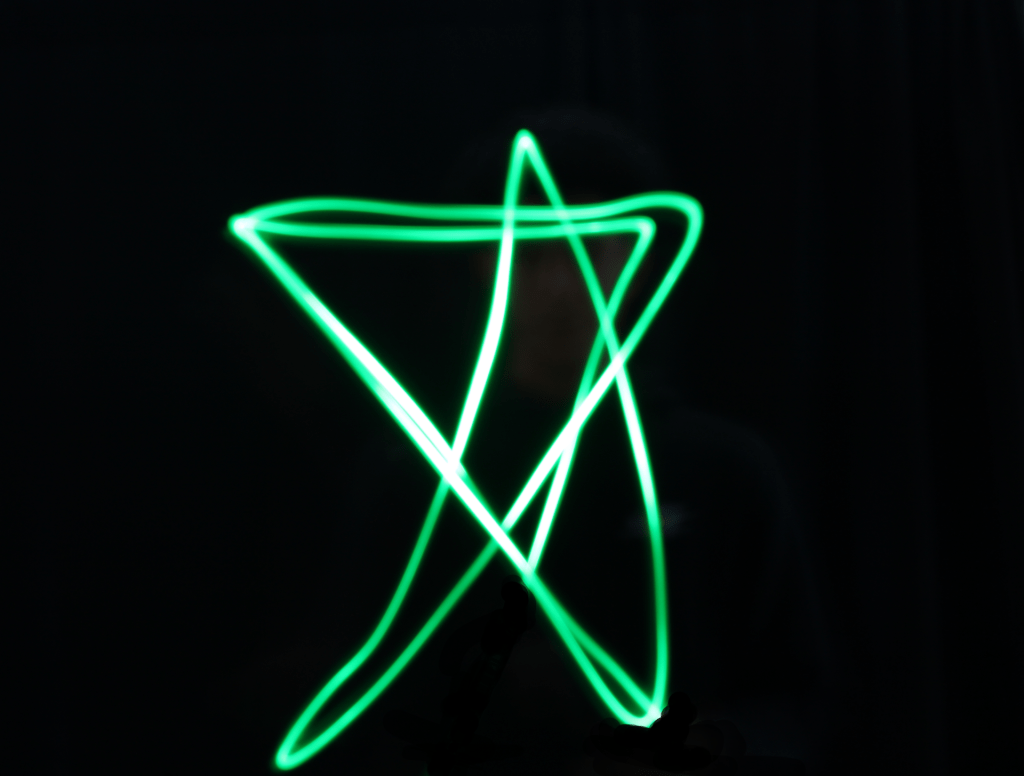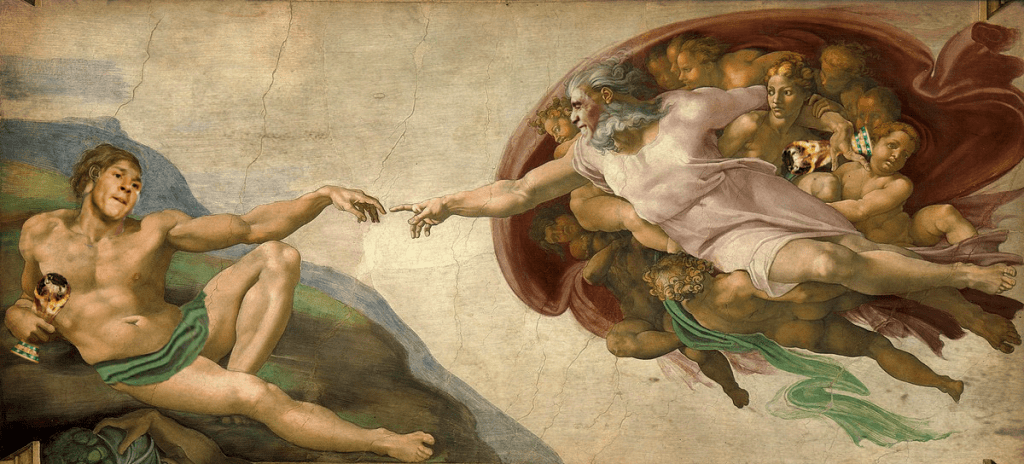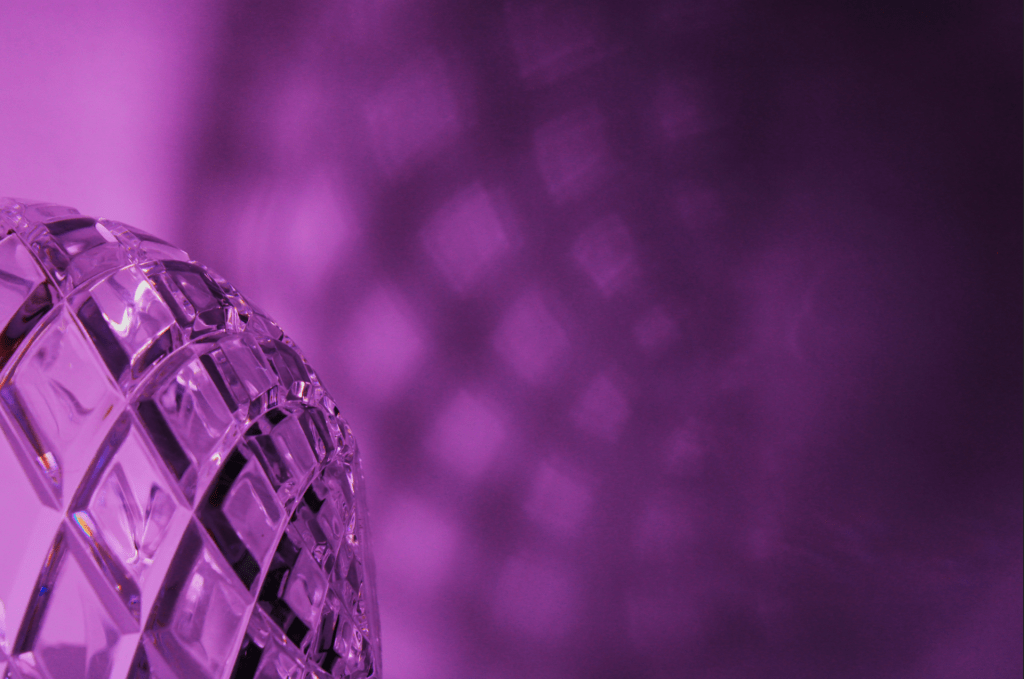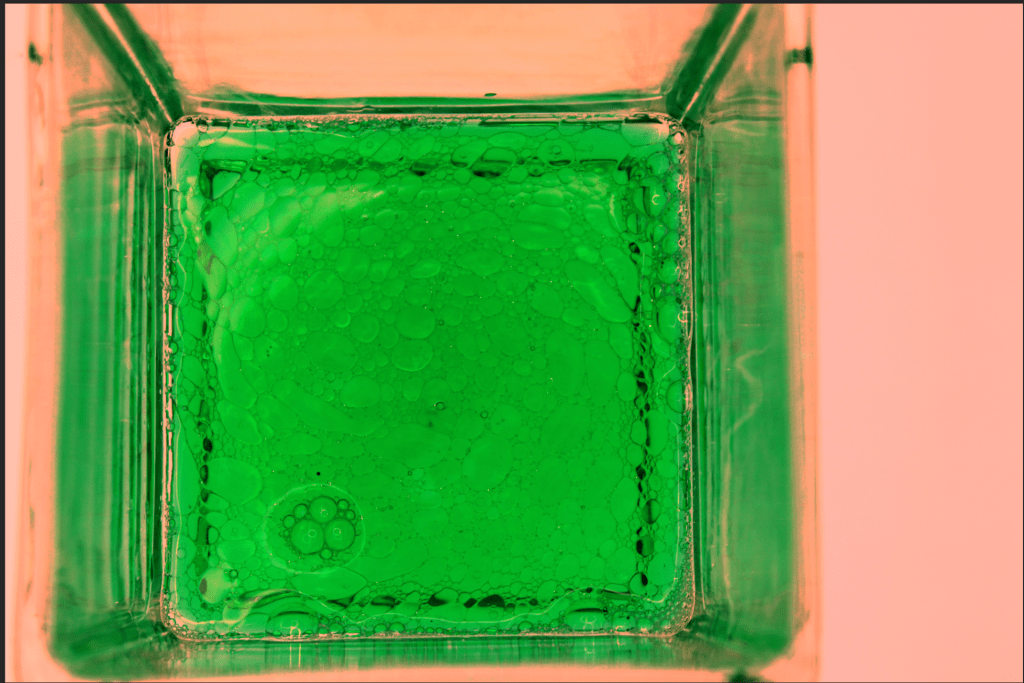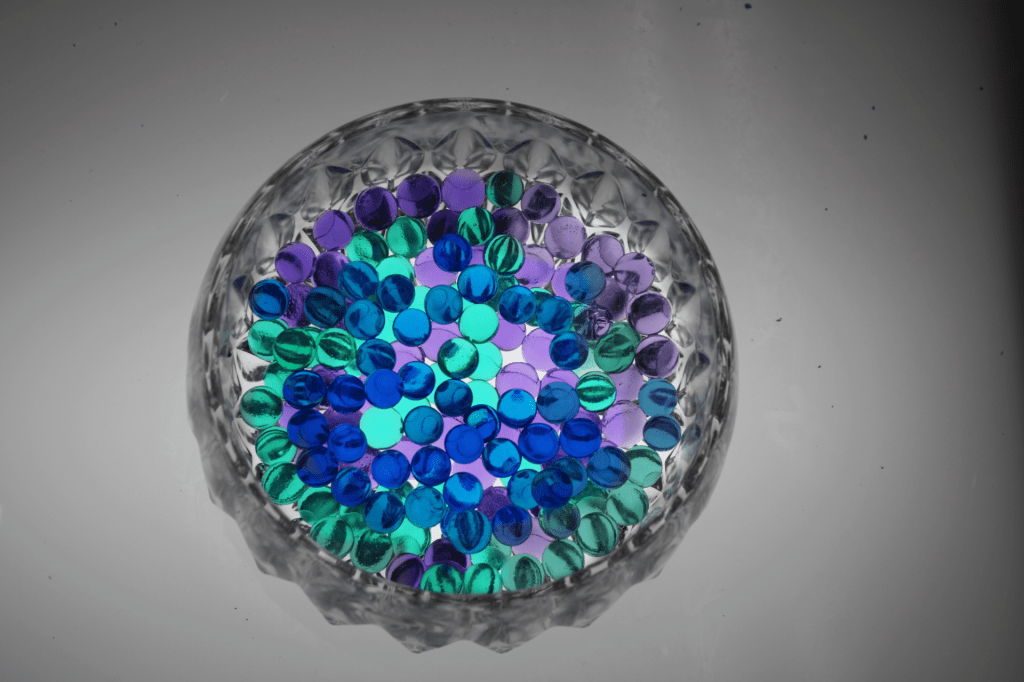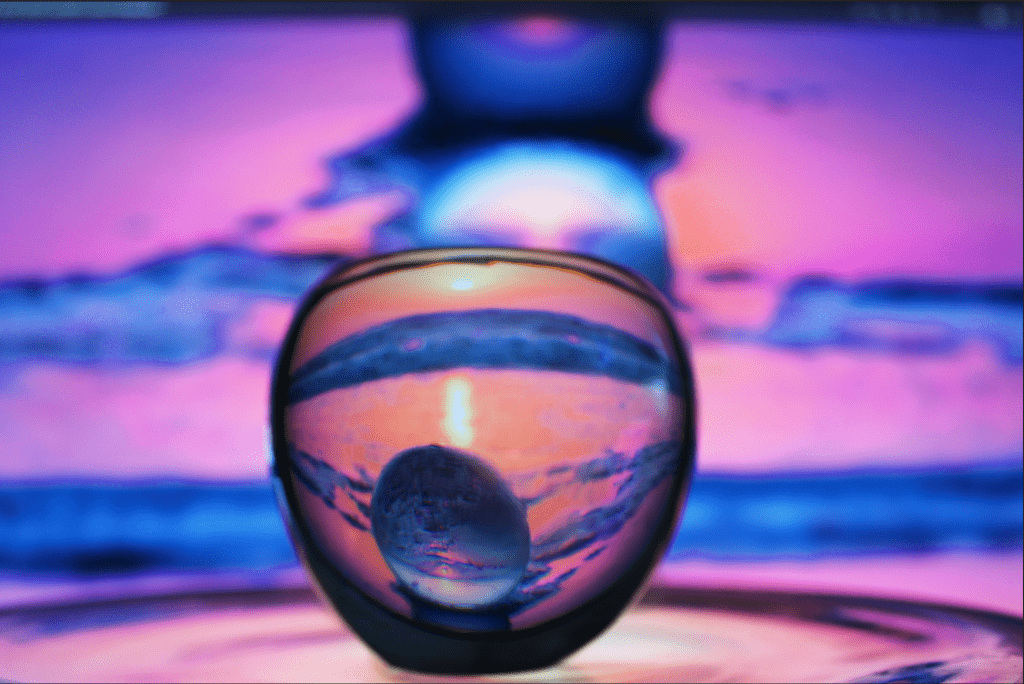

1. What were your inspirations for creating the album cover art?
When creating my album cover art, I had a multitude of inspirations. To start, I wanted to make a unique design while still having the same feel as other Lucki albums. Most of Lucki’s album covers feature a scrapbook type of art style which is why I included that on the back cover. For the front, I wanted to emphasize the psycadelic aspect of the art peace.
2. Which Adobe programs, CRAP principles (contrast, repetition, alignment, proximity), and digital techniques or trends did you use, and why did you make those choices?
When creating my art piece, the digital technique that I started with was using A.I. to generate photos. From there, I chose pictures that I felt displayed alignment and proximity in a way that I thought fit my message. Because of this, you can see that on the back I was able to make it look like Lucki was in the middle of two buildings by prioritizing alignment and proximity.
3. What do you intend for audiences to see, experience, and think about when viewing your work?
When an audience views my work, I want them to see the idea of a psycadelic looking front cover for a psycadelic rap album. For the back, I wanted the viewers to think about the message of the songs featured in the album which is often Lucki’s take on life and the hardships throughout it. I want the audience to see both sides of Lucki’s songs as the front represents the surface level interpretation of the songs just being psycadelic rap while the back represents the deeper meanings featured within his songs.
4. Which are the most successful aspects of your work?
I think the most successful aspects of my work are the message and look of the front and back covers. I really like that I was able to convey both sides of Lucki’s work while still making the covers visually appealing. I think I really captured the feel of listening to Lucki’s music and what the listener should expect when listening to his music.



